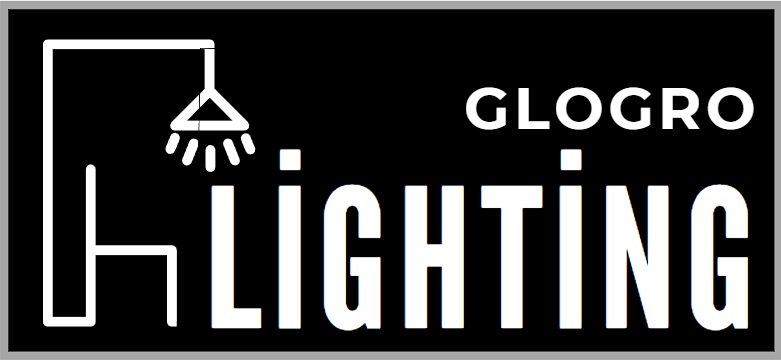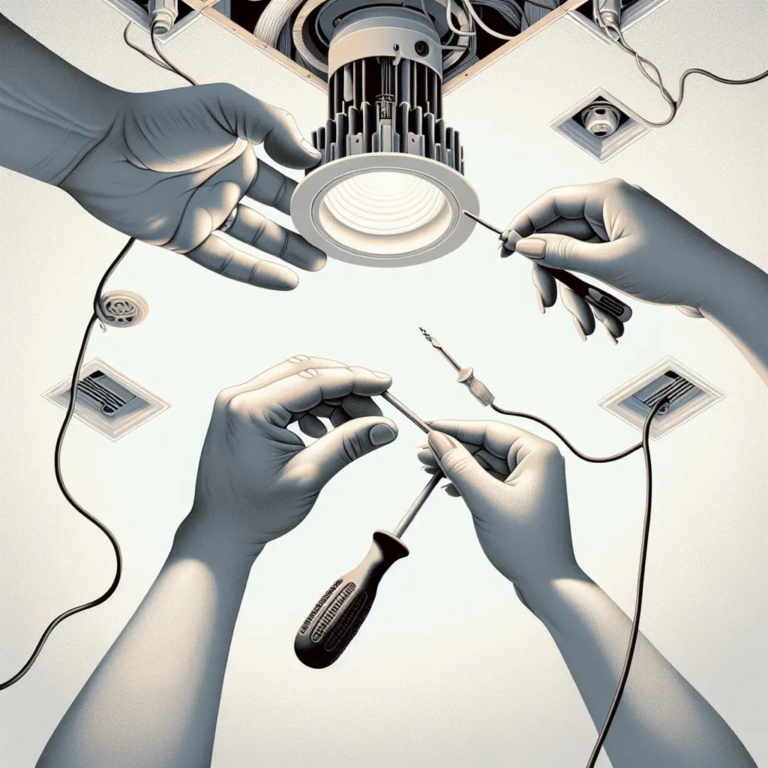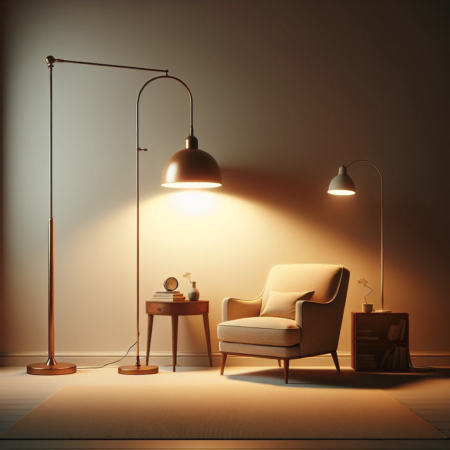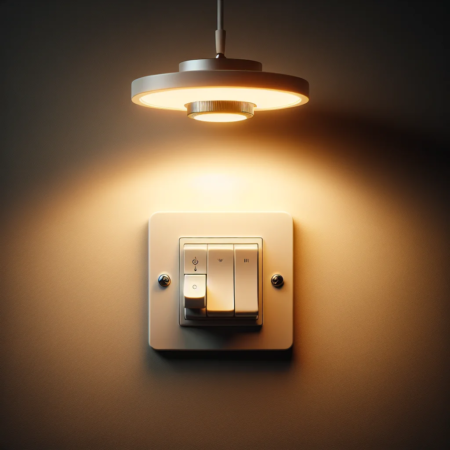Check out this Youtube video: Learn how to add recessed ceiling lights with no attic or prior wiring in this helpful tutorial.

Contents
- 1 Understanding Recessed Ceiling Lights
- 2 How to Add Recessed Ceiling Lights
- 3 Common Mistakes to Avoid When Adding Recessed Ceiling Lights
- 4 Frequently Asked Questions
Understanding Recessed Ceiling Lights
Recessed ceiling lights, also known as can lights or downlights, are fixtures installed into the ceiling, providing a modern and seamless lighting solution. These lights are designed to sit flush with the ceiling, offering a subtle, yet effective illumination for various spaces. They come in different types such as baffle trim, reflector trim, adjustable trim, and wall wash trim, providing flexibility and tailored lighting effects for different needs.
Benefits of using recessed ceiling lights include creating a spacious ambiance, providing a modern aesthetic, offering flexibility, energy efficiency, and versatility in their usage.
Definition of recessed ceiling lights
Recessed ceiling lights, also known as can lights or downlights, are fixtures installed into the ceiling, providing a modern and seamless lighting solution. These lights are designed to sit flush with the ceiling, offering a subtle, yet effective illumination for various spaces. Unlike traditional light fixtures that hang below the ceiling, recessed lights are integrated into the structure, creating a clean and unobtrusive aesthetic.
Different types of recessed ceiling lights
Recessed ceiling lights come in several variations to suit different lighting needs: 1. Baffle Trim: Features ribbed interior to reduce glare, ideal for general lighting. 2. Reflector Trim: Emits a more specular, concentrated light, often used for task lighting. 3. Adjustable Trim: Offers flexibility to direct the light where it’s needed, great for accent lighting. 4. Wall Wash Trim: Designed to illuminate a larger area, perfect for showcasing artwork or architectural features.
Benefits of using recessed ceiling lights
The utilization of recessed ceiling lights presents numerous advantages: 1. Spacious Ambiance: These lights create an illusion of spaciousness, making rooms feel larger. 2. Modern Aesthetic: Their seamless integration into the ceiling provides a contemporary and minimalist look. 3. Flexibility: The availability of various trims allows for tailored lighting effects and functionality. 4. Energy Efficiency: Utilizing LED bulbs in recessed lights can significantly reduce energy consumption. 5. Versatility: Recessed ceiling lights can be used for general, accent, or task lighting, offering adaptability for different spaces.
How to Add Recessed Ceiling Lights
To add recessed ceiling lights, first plan the layout and placement of the lights based on the room’s purpose and size, ensuring balanced illumination. Gather necessary tools and materials including a stud finder, tape measure, drill with hole saw attachment, wire cutters, voltage tester, and light fixtures. Then, follow a step-by-step installation process, which includes drilling holes, wiring the lights, securing them in place, and testing for proper functionality.
Yes. The initial step is to plan the layout and placement of the lights based on the room’s purpose and size, ensuring balanced illumination. Yes. The necessary tools and materials for installation include a stud finder, tape measure, drill with hole saw attachment, wire cutters, voltage tester, and recessed light fixtures. Yes. The step-by-step installation process includes drilling holes, wiring the lights, securing them in place, and testing for proper functionality.
Planning the layout and placement of the lights
When planning the layout and placement of recessed ceiling lights, consider the room’s purpose and size. Ensure the lights are evenly distributed to achieve balanced illumination. Use a tape measure to map out the placement, and consider spacing between the lights. Additionally, take into account any obstructions such as ceiling joists or ductwork.
Necessary tools and materials for installation
Gathering the necessary tools and materials for installing recessed ceiling lights is crucial. You will require a stud finder, tape measure, pencil, drill with a hole saw attachment, wire cutters, voltage tester, and a screwdriver. Furthermore, ensure you have the appropriate cables, recessed light fixtures, and wire nuts for the installation process.
Step-by-step guide to installing recessed ceiling lights
Drilling holes for the lights
Begin by marking the locations for the lights based on your layout plan. Use a stud finder to avoid ceiling joists and other obstructions. With a pencil, mark the centers for the lights. Next, using a drill with a hole saw attachment, carefully drill holes at the marked locations.
Wiring the lights
After drilling the holes, it’s time to wire the lights. Turn off the power to the circuit where the lights will be installed. Use a voltage tester to confirm that the power is off. Then, run the necessary cables from the power source to the recessed light fixtures, ensuring to leave enough wire at each light’s location for connections.
Securing the lights in place
With the wiring in place, secure the lights in the holes you drilled earlier. Follow the manufacturer’s instructions for securing the lights into the ceiling.
Typically, this involves adjusting the mounting clips or screws provided with the fixtures to secure them firmly in place.
Testing the lights
Before completing the installation, it’s vital to test the lights. Turn the power back on and use a wall switch or dimmer to ensure the lights function correctly. Verify that the connections are secure and that the lights distribute the desired illumination throughout the room.
Drilling holes for the lights
To achieve precise holes for the recessed ceiling lights, an excellent carbide hole saw is essential. Run the drill at a high speed with minimal pressure, allowing the saw to do the work. This method consistently produces clean and accurate holes for recessed light installation.
Wiring the lights
When wiring the recessed lights, ensure the power is switched off to the circuit. Use a voltage tester to confirm that the circuit is indeed de-energized before handling the wiring. Properly route and secure the cables from the power source to the light fixtures, allowing for a safe and efficient electrical connection.
Securing the lights in place
To secure the recessed lights in place, carefully follow the provided instructions by the manufacturer. Adjust the mounting clips or screws to ensure a stable and secure fit within the drilled holes. Properly securing the lights is critical for their long-term functionality and safety.
Testing the lights
After installation, the recessed lights must be thoroughly tested to confirm proper function and illumination. Turn on the power and use a wall switch or dimmer to ensure the lights operate as intended. Verify that the distribution of light is even and suits the room’s requirements.
Common Mistakes to Avoid When Adding Recessed Ceiling Lights
When adding recessed ceiling lights, it is crucial to avoid overloading the electrical circuit, calculate the total wattage of the lights, and use LED lights that consume less energy to prevent tripping circuit breakers and flickering lights. Improper placement of lights can result in ineffective lighting and glare issues, so it’s essential to aim for the optimal angle of 30-degrees from the ceiling and consider the room’s layout and intended use for even illumination. Choosing the right bulbs, such as LED bulbs with the appropriate size, beam angle, and color temperature suitable for recessed ceiling lights, is crucial to ensure optimal performance and energy efficiency while avoiding lighting inconsistencies and premature bulb failure.
Overloading the circuit
Overloading the electrical circuit by connecting too many recessed ceiling lights to a single circuit can lead to various issues. Signs of an overloaded electrical circuit include tripping circuit breakers, dimming or flickering lights, overheated outlets or switches, buzzing sounds, or burning odors.
To avoid overloading the circuit, it’s crucial to calculate the total wattage of the lights and ensure it does not exceed the circuit’s capacity. Using LED lights that consume less energy can also help prevent overloading the circuit.
Incorrect placement of lights
Improper placement of recessed ceiling lights can result in ineffective lighting and create glare issues. It’s essential to aim for the optimal angle of 30-degrees from the ceiling to minimize glare.
Additionally, considering the room’s layout and intended use can guide the placement of lights for even illumination. Using a layout guide or seeking professional advice can prevent errors in the placement of recessed ceiling lights, ensuring a well-lit and visually appealing space.
Using incompatible bulbs
Choosing the right bulbs is crucial when adding recessed ceiling lights to ensure optimal performance and energy efficiency. Utilizing incompatible bulbs, such as those with the wrong size or type, can lead to lighting inconsistencies and premature bulb failure.
For recessed lighting fixtures, R bulbs (reflector bulbs) are commonly used due to their reflective surface that helps direct the light. It’s important to select LED bulbs with the appropriate size, beam angle, and color temperature suitable for recessed ceiling lights to achieve the desired lighting effect while maximizing energy savings.
The importance and benefits of recessed ceiling lights cannot be overstated. The use of recessed lighting not only adds a touch of elegance and modernity to any space but also offers several practical advantages. Firstly, it provides extensive coverage area, ensuring a well-lit and visually appealing ambiance. Additionally, recessed lights contribute to boosting the value of your home, which is an important consideration for homeowners looking to enhance their property’s overall appeal and market value.
Moreover, recessed lighting plays a vital role in preventing accidents by eliminating darkened corners and ensuring even illumination throughout the room. This not only enhances safety but also creates a minimalist look, making the space appear more open and spacious. Another critical aspect is the impact on mood and atmosphere in interior design. When strategically placed, recessed lighting can significantly elevate the ambiance of a room, contributing to a cozy, inviting atmosphere that positively influences moods and emotions.
It’s important to note that while recessed lighting comes with numerous benefits, it’s crucial to consider the potential downsides as well. One major concern is that improper installation can lead to issues, negatively impacting the overall aesthetic and functionality. Additionally, poorly chosen or installed recessed lights can have a detrimental effect and may lead to dissatisfaction. Therefore, it’s crucial to carefully consider the placement, type, and intensity of recessed lighting to ensure optimal results and avoid potential drawbacks.
Recessed ceiling lights offer a multitude of benefits, from practical advantages such as expansive coverage and enhanced safety to aesthetic enhancements that can elevate the overall atmosphere and mood of a space. By understanding both the advantages and potential downsides, individuals can make informed decisions regarding the implementation of recessed lighting, ensuring it positively impacts their living or working environment.





